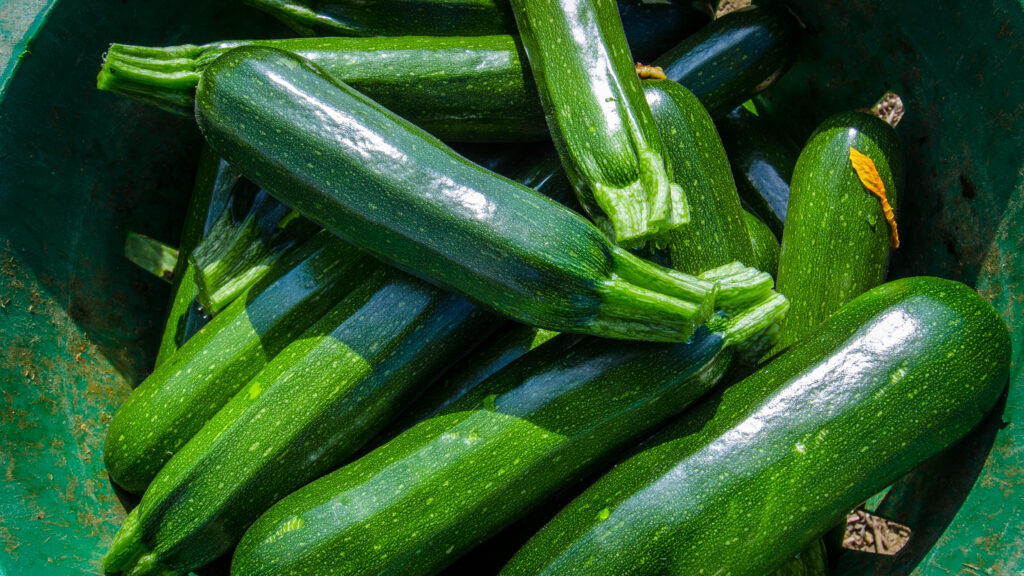Growing Zucchini (Cucurbita pepo) from seed is a rewarding endeavor that allows you to enjoy fresh, homegrown produce.
Zucchini is a member of the gourd family, Cucurbitaceae, and is known for its prolific production in the garden.
Zucchini is a warm-season, annual vegetable plant that belongs to the gourd family, Cucurbitaceae. It thrives in USDA hardiness zones 3-10 and is well-suited for summer growing.
Zucchini plants produce an abundance of tender, green fruit that is delicious when harvested young.

When to Start Zucchini from Seed
Zones 3-5: Start Zucchini seeds indoors 4-6 weeks before the last expected frost date, typically in late spring. Transplant seedlings into the garden after all danger of frost has passed.
Zones 6-8: Begin indoor seeding 2-4 weeks before the last frost date. Transplant when frost is no longer a threat.
Zones 9-12: In warm regions, Zucchini seeds can be directly sown into the garden once the soil temperature reaches at least 60°F. You can also start them indoors or undercover during the colder months or rainy season to protect tiny seedlings.
Starting Zucchini Seeds Indoors

Select a high-quality, well-draining seed starting mix or create your own by combining peat moss, perlite, and vermiculite.
Use biodegradable pots or seed trays with drainage holes to start Zucchini seeds. Zucchini are large seedlings, so choose containers at least 2-3″ big.
Sow Zucchini seeds 1 inch deep in the seed starting mix.
Gently press the soil over the seeds to ensure good soil-to-seed contact.
Maintain consistent moisture in the soil without overwatering. A spray bottle can help keep the surface moist.
Maintain a temperature of 70-90°F for successful germination. Use a seedling heat mat if needed.
Zucchini seedlings require 6-8 hours of direct sunlight daily. Supplement with grow lights if necessary.
How to Know When Your Zucchini Plants Are Ready for the Garden
Zucchini seedlings are ready for transplant when they have at least two sets of true leaves, usually 2-4 weeks after germination.
Preparing the Garden Bed for Growing Zucchini Plants

Select a sunny spot with well-drained soil. Zucchini thrives in full sun.
Avoid planting Zucchini where other cucurbits (like cucumbers or pumpkins) recently grew to reduce disease risks.
Loosen the soil gently with a garden fork or broad fork. We recommend against tilling or digging up established garden beds to preserve soil life and structure.
Remove weeds and incorporate organic compost to enhance fertility and moisture retention.
Add a layer of compost or well-rotted manure to improve soil quality and nutrient content.
You will need 24-36 inches in diameter when growing zucchini, so allow enough room for their spreading growth habit.
While Zucchini plants don’t typically require support, you can use stakes or trellises for vining varieties.
Hardening Off Your Zucchini Plants
Gradually acclimate Zucchini seedlings to outdoor conditions over 7-10 days, starting with a few hours of sunlight exposure each day.
Planting Your Growing Zucchini Plants into the Garden

Plant Zucchini seedlings at the same depth they were in their containers, usually just below the soil surface.
Maintain 24-36 inches between plants to accommodate their mature size.
Apply organic mulch around the plants to conserve moisture and inhibit weeds. Hay, straw, and woodchips all work well for this.
Water plants thoroughly after transplanting and maintain consistent moisture throughout the growing season.
Caring for Zucchini Plants
Provide regular moisture, allowing the soil to dry slightly between watering sessions.
Fertilize with a balanced, water-soluble fertilizer every two weeks until plants bloom, then switch to a fertilizer for tomatoes.
Keep the garden bed free of weeds to reduce competition for nutrients and moisture.
Monitor for common pests like aphids and squash bugs. Squash bugs can be conquered with a spray bottle full of soapy water. Add a tablespoon of castile soap to a 16 to 24-ounce spray bottle and apply liberally to squash bugs.
Promote good air circulation by avoiding overhead watering and removing expired leaves and stems.
Tips and Tricks for Growing Zucchini
Consider hand-pollinating to ensure fruit set
Harvest zucchini when they’re young for the best flavor and tenderness.
When and How to Harvest Zucchini

Harvest Zucchini when the fruits are 4-8 inches long for the best flavor and texture. Use a knife or pruner to cut the fruit from the plant.
How to Clean and Store Home-Grown Zucchini
Rinse harvested Zucchini under cool water and store them in the refrigerator for up to two weeks. You can also blanch and freeze Zucchini for longer-term storage.
How to Cook with Zucchini
Zucchini is incredibly versatile in the kitchen. Some common dishes that use zucchini include zucchini Bread, zucchini fritters, Zoodles, and grilled zucchini.





